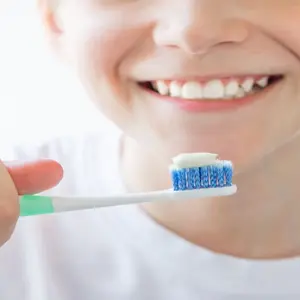
Healthy Kids
Healthy Kids
Microbial Transfer After C-Section May Provide Protective Microbes To Baby
A Cesarean section, or C-section, is the surgical delivery of a baby through an incision made in the birth parent's abdomen and uterus. Healthcare providers perform C-sections when they believe it's safer for the birth parent, the baby, or both. When medically justified, caesarian section deliveries can save the life of either parent or child during complicated births.
The United States is the only high-income nation to see an increase in maternal mortality rates since 1990. While other high-income countries have reduced deaths related to childbearing, the U.S. has seen more maternal deaths in the last three decades, with Indigenous and Black Americans disproportionately affected.
In recent years, C-section rates have been on the rise, without significant benefit to the health of birth parents or their babies. This increase is partly due to elective procedures for the convenience of either patient or provider—and are sometimes results of provider pressure on the patient. According to the WHO, additional non-medical factors drive this trend—from fear of pain and cultural beliefs about “lucky” birth dates, to concerns about preserving pelvic health, swift return to sexual activities, or doctors’ fear of litigation when vaginal deliveries don’t go as planned.
At the same time, as the scientific community takes a greater interest in the wide-reaching influences of the gut microbiome, scientists have begun investigating how C-section deliveries may affect newborn health. Early microbial exposure is thought to help “train” the developing immune system, shape digestion and metabolism, and even influence risks for allergies, asthma, or obesity later in life. Without this initial seeding, babies born by C-section may start life with a different microbial blueprint, which researchers are now linking to subtle but important differences in long-term health outcomes.
A series of studies in the 2010s demonstrated that the mode of delivery shapes a baby’s microbiome. Babies delivered vaginally acquire beneficial microbial species from the parent’s vaginal canal, while babies born via C-section do not obtain this same microbial diversity. This difference in microbial exposure has been linked to adverse health outcomes later on in life. Babies delivered via C-section may have higher risks of certain diseases and developmental disorders when compared to their vaginally-born peers.
And yet, C-sections remain a lifesaving and often necessary intervention to protect both mother and child. Armed with this new knowledge on the importance of the infant microbiome, scientists have been experimenting with new interventions to mitigate potential microbial deficiencies.
In a 2023 study published in Cell Host & Microbe, researchers tested a procedure called vaginal microbiota transfer (VMT). In the experiment, newborns were exposed either to a sterile gauze dipped in saline or to a gauze containing the mother’s vaginal fluid. This procedure was intended to mimic the fluids the baby would be exposed to if they had been born vaginally, in an attempt to provide the baby with beneficial microbes. The experiment employed a triple-blinded study design, in which participants, the researchers administering the treatment, and the analysts examining the data were all unaware of which treatment each infant received. This design helps maximize objectivity and minimizes bias.
The study found that VMT was associated with improved neurodevelopment in C-section–born infants; improvements were seen in communication, gross motor, personal-social, and fine-motor skills. On the microbiome front, VMT babies also showed faster maturation: by day 30 and 42, their gut bacteria more closely resembled those of vaginally delivered infants. Plus, key metabolic pathways—like carbohydrate, energy, and amino acid processing—looked healthier too.
Together, this study and others like it highlight emerging and creative scientific interventions that may help restore the microbiome for babies delivered via C-section, offering new possibilities for supporting long-term health outcomes.
To learn more about these topics, visit the following links:
https://www.knowewell.com/written-content/vaginal-microbiome-affects-womens-health-and-well-being
https://www.knowewell.com/sites/default/files/2022-01/MicrobiomeArticle.pdf
https://www.knowewell.com/written-content/microbiome-and-fertility
https://www.knowewell.com/webinar/microbiome-magic-key-healthy-happy-kids-empowering-patients-towar…
https://www.knowewell.com/written-content/babies-and-microbiome-lessons-pandemic-episode-176
https://www.knowewell.com/written-content/breastfeeding-shapes-babys-gut-and-immune-health
REFERENCES
https://jamanetwork.com/journals/jama/fullarticle/2806661
https://jamanetwork.com/journals/jama-health-forum/fullarticle/2794350#:~:text=According
https://www.nature.com/articles/d41586-019-02807-x#:~:text=Babies
https://www.scientificamerican.com/article/c-section-babies-are-missing-key-microbes/
https://pmc.ncbi.nlm.nih.gov/articles/PMC8537978/
https://www.frontiersin.org/journals/nutrition/articles/10.3389/fnut.2025.1597206/full?utm


 By
By







